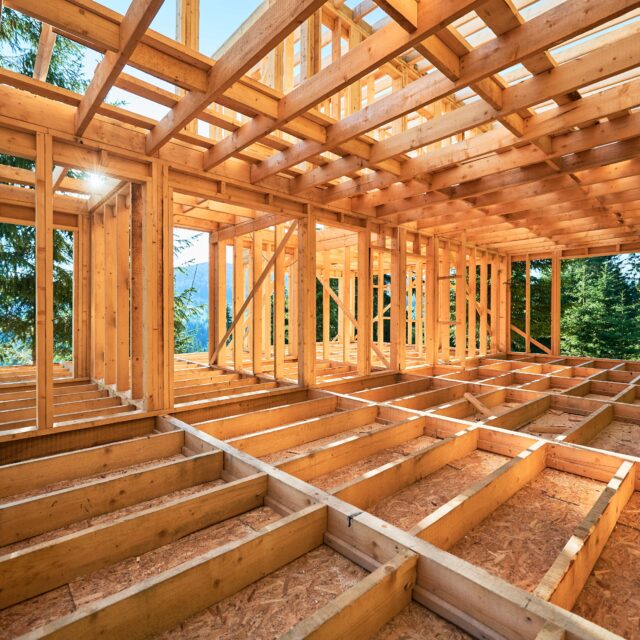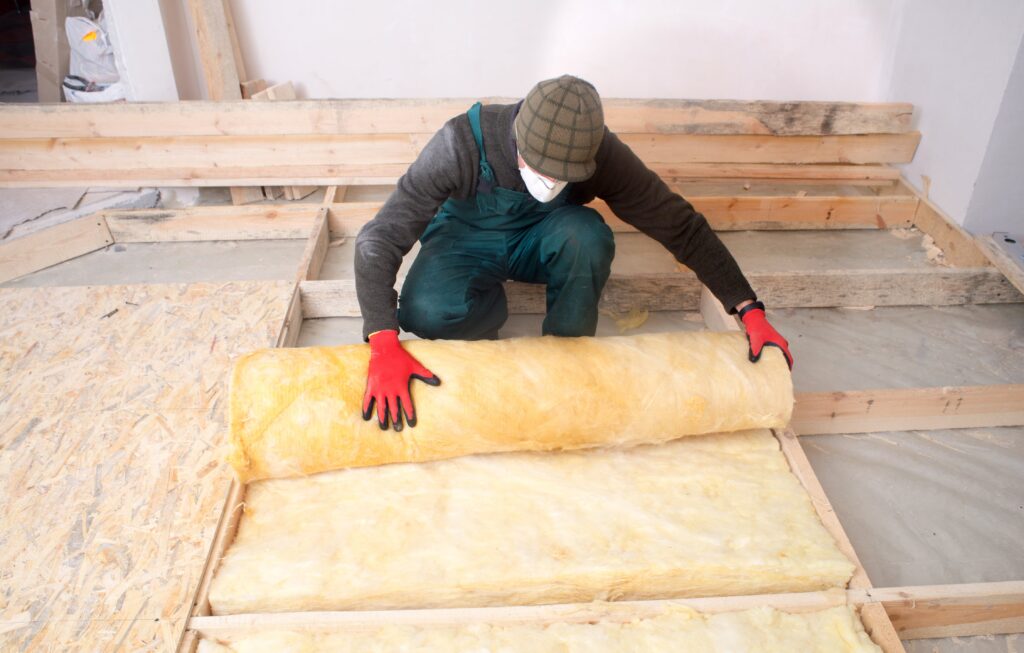Why Being Green When Remodeling Is Important

- Written by: jlbmdev

“Being green” isn’t just a buzzword.
Over the last few years, there’s been a conscious shift in the thought that remodeling is bad for the environment. Builders and manufacturers are implementing green practices and materials into their work for overall environmental health. And homeowners can get in on the trend.
In fact, with a few smart choices, you can transform your home into a place that’s healthier and saves you money in the long run. It can even increase your home’s value.
This blog is your guide to answering why being green in remodeling is important. We’ll explore the benefits, and you’ll leave with the knowledge to help you make eco-conscious choices that transform your home and help the environment.
Like any renovation project, there are a few essential steps you need to take before you get started.
Before you do anything, you need to define what your priorities are. Do you want to reduce your energy use and reduce your carbon footprint? Or do you want to use more green materials in your build?
Knowing what you want to accomplish sets the tone for the whole project and helps you determine your plan moving forward. You know what you need to look into and won’t waste your time on areas you don’t have an interest in.
Once you establish your goals, then you can start your research into what specific materials and practices you want to use on your project. If you’re new to eco-friendly materials, then it would be a good idea to see what the specifics of each one are so you’ll know if they’ll be suitable for your build and your goals.
Another area to look into is the different certifications to look for in your building materials and contractors. The four most popular ones are:
Leadership in Energy and Environmental Design (LEED) is the world’s most widely used green building rating system. This certification is for all building projects from new construction to interior remodels. To achieve LEED certification, a project earns points by adhering to prerequisites and credits that address carbon, energy, water, waste, transportation, materials, health, and indoor environmental quality.
The WELL Building certification is focused on a person’s overall health and how building design can contribute to that. Its standards promote how the built environment can improve a building user’s wellness, including physical, mental, and emotional health.
The Living Building Challenge is a more demanding certification and requires buildings to produce more energy than they use. The goal is that this regenerative design should be attainable to everyone no matter their location. So, they created a streamlined approach focused on maximizing positive impacts specific to the location and goals of a project.
Most people know Energy Star certifications when it comes to appliances. But Energy Star also has a building certification. It requires buildings to not only meet the energy standards set by the Environmental Protection Agency but also prove that your building consumes less energy than 75% of similar buildings nationwide.
Creating a home improvement project budget can be overwhelming, especially if you’re a first-time homeowner or embarking on your first renovation project. The more time and energy you put into researching and planning your project, the less likely you will face unexpected costs.
Knowing your financials will also help you look at the upfront costs versus the long-term savings of sustainable materials and practices. For example, some eco-friendly materials can have a higher initial price but could lead to significant savings over time, which can pay for the higher cost.
Also, look into potential tax credits for green upgrades like solar panels or insulation. These credits can add up, helping offset the renovation costs or allowing you to select higher-end finishes or products.
You wouldn’t hire a mechanic to fix your car that didn’t have experience working on your car’s make. The same principle applies to contractors. Look for professionals with a positive reputation around sustainable building practices and certifications.
If you can’t find what you’re looking for online, set up interviews with contractors. Don’t hesitate to ask pointed questions during interviews. How do they source materials? What waste reduction strategies do they employ? By prioritizing transparency and qualifications, you’ll get the answers you need to feel comfortable hiring the right contractor for the job, leading to a sustainable and successful project.

Incorporating sustainable practices into your remodel offers a win for the environment, your finances, and your health. Here are some key benefits:
The biggest benefit of an eco-friendly remodel is your overall environmental impact and reduced carbon footprint. By prioritizing energy-efficient materials and systems, you minimize your home’s greenhouse gas emissions and combat climate change.
Eco-friendly materials and practices often promote better indoor air quality and reduce water pollution–an important environmental benefit. You can also use appliances that are water efficient and use less when you use them, like flow-flow faucets or toilets.
When you’re doing demolition, be careful when removing fixtures like flooring or cabinets so you can donate or salvage materials for reuse. Several organizations will recycle building materials and accept donations like cabinets or flooring, like Habitat for Humanity’s ReStore. This allows someone else to use your recycled building materials in their construction project.
Once you get your energy efficiency settled, you’ll be able to start seeing the financial payoff. One of these benefits is you’ll experience lower electric bills. Energy-efficient upgrades like insulation, windows, and appliances lead to significant savings on your monthly utility bills.
Many government programs and utility companies offer tax breaks, rebates, and other financial incentives for green remodeling projects. For example, the IRS offers an energy-efficient home improvement credit if you’ve made a qualified energy-efficient improvement project after January 1, 2023. Homeowners could be eligible for a tax credit of up to $3,200. There are also credits available if improvements were made before 2023.
Another financial benefit to green remodeling is the increased home value. Most people know that kitchens and bathrooms have the greatest return on investment (ROI) when renovating, so why not turn that remodel into a green one? Green homes are increasingly attractive to buyers, potentially fetching higher resale prices.
Eco-friendly remodels go beyond environmental and financial benefits—they can have a significant positive impact on your health while you’re in your home. One of those impacts is improved indoor air quality. By using low-VOC (volatile organic compound) materials in your construction and finishes, and promoting good ventilation through design elements, you can lead to a reduction in allergies, respiratory problems, and even headaches, all of which can be triggered by poor air quality.
Eco-friendly building also improves your overall comfort at home. Natural lighting not only reduces your reliance on artificial lights but also uplifts your mood and energy levels. Efficient heating and cooling systems ensure consistent and comfortable temperatures without creating drafts or hot spots. Additionally, eco-friendly construction often incorporates noise reduction strategies like proper insulation and material choices, leading to a quieter and more peaceful living space.
Finally, there’s the peace of mind that comes with knowing you’ve made environmentally conscious choices in your home. Going green when remodeling means you’re contributing to a smaller carbon footprint and a healthier planet for yourself and future generations.
By using environmentally friendly materials, you can use less energy to keep your home comfortable. One way to do this is by checking and upgrading your insulation in walls, attics, and basements to help keep warm air in during the winter and cool air in during the summer. This reduces the strain on your heating and cooling systems and also helps save you money.
Another way to reduce heat and cool air transfer is by replacing older, drafty windows and doors with energy-efficient ones. Look for windows with multiple panes and a special coating that reflects heat in the summer and insulates in the winter. Energy-efficient doors with good weatherstripping will also contribute to lower energy use.
Also, consider upgrading your appliances and lighting to more energy-efficient models. Look for the Energy Star label when purchasing new appliances, since they meet strict energy-saving criteria. Switching to LED lightbulbs throughout your house is another simple and effective way to save energy.

Part of a successful green remodeling project is working with the right contractor. Finding the right one can be difficult but that’s where J&L Building Materials comes in. We have an extensive network of contractors and our team can help you find the right one for your project.
Getting the right products for your project is key to a successful project and a happy homeowner. But finding the building products you need from the brands you trust in one place can be difficult.
At J&L, we’ve aligned ourselves with the top manufacturers in the industry to ensure our product selection is second to none. So between materials and our network of contractors, we’ve become your one-stop shop for being green when remodeling.